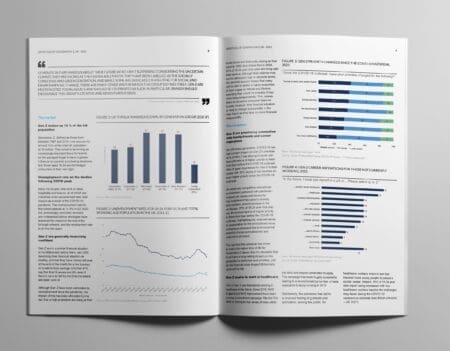Craft Beer Drinkers Go Beyond IPAs This St. Patrick’s Day; 83% Admit to Drinking Non-craft Beer
As the craft beer category becomes increasingly competitive with larger companies and niche brewers alike entering the market, attempting to edge out established players, research shows that brewers have their work cut out for them when attracting craft drinkers. Market intelligence agency, Mintel reports that 23 percent of respondents drink craft beer, with craft consumption highest among those between the ages of 25-34.
However, while the stereotype of craft beer drinkers is that they are more particular about the beverage products they choose, Mintel research shows they are by no means exclusive in their beer drinking. In fact, some 83 percent of craft beer drinkers also drink non-craft. What’s more, US craft drinkers are more likely (49 percent) to associate craft beer consumption with casual events than formal events, perfect for celebrating St. Patrick’s Day throwing back a few rounds with friends.49% of craft drinkers associate craft beer consumption with casual events, perfect for celebrating St. Patrick’s Day throwing back a few rounds with friends.
Mintel Food and Drink Analyst, Beth Bloom, estimates sales of craft beer (including craft-style offerings) reached $20 billion in 2014, doubling sales just five years prior, and the category is forecasted to reach $36.3 billion by 2019. The steady growth of the category is due, in part, to the 55 percent of respondents who report that they are willing to spend more for craft beer than non-craft. Consumer’s willingness to part with their hard earned money can be linked to strong ties between craft beer and personal image. In fact, 15 percent of those surveyed are influenced to try a new beer when they see people who are similar to themselves drinking it, and 44 percent of craft beer drinkers say it is a source of pride to try as many different kinds of beer as they can. The majority of beer drinkers age 22-34 say the brand and style of beer you drink says a lot about you, showcasing the value this group places on image. Furthermore, craft beer drinkers overall are more likely than those who drink non-craft to say they are knowledgeable about beer, and 53 percent like to share their knowledge of beer with others.
However, women who drink beer are significantly less likely than their male counterparts to consider themselves knowledgeable about beer. Just 17 percent of US women drink craft beer, compared to 29 percent of men. That said, craft beer has found a sweet spot with 25-34 year olds where consumption is highest at 29 percent. Younger US consumers age 22-24 prefer domestic beer at 46 percent. “This suggests that new drinkers may take a couple of years to become interested in craft beer,” said Bloom. “The appreciation of the craft nature of the category is evident in the fact that drinkers of craft offerings are significantly less likely than drinkers of regular domestic beer to say the purpose of drinking is to get drunk.”
THE WHEN OF CRAFT BEER: A CASUAL HANG WITH FRIENDS
Mintel’s Craft Beer – US 2014 report shows that more than half of craft beer drinkers (53 percent) say they partake to relax. This rises to 63 percent among those age 22-44. What’s more, half of craft beer drinkers consume beer as a personal reward or treat. Although the majority of respondents drink these products with friends or loved ones in order to share the craft experience, nearly one third does so by themselves. Craft beer drinkers age 22-44 are significantly more likely than older respondents to drink by themselves (38 percent). Additionally, respondents are more than twice as likely(49 percent) to associate craft beer consumption with casual events than they are formal gatherings.
THE WHERE: CRAFT BEER POPULAR IN HOME OR OUT & ABOUT
Whereas at-home consumption clearly rules when it comes to general beer drinking, drinkers of craft products only slightly favor drinking at home versus drinking at a restaurant or bar (51 percent). “Craft products are perceived to be more expensive than general beer offerings,” said Bloom. “For this reason, consumers may not be interested in purchasing bulk packages for consumption at home. Having one or two beers at a restaurant may appear as a more affordable means of trial.”
THE WHY: CRAFT DRINKERS HOLD OUT FOR STYLE, ARE OPEN TO NEW PRODUCTS
“While brand awareness rises to the top of factors driving purchase among overall beer drinkers, craft beer drinkers are a bit more discerning and most likely to say beer style – such as an IPA or stout – is important in product selection.” Bloom went on to say, “this focus on style and flavor is a major element that differentiates a craft beer drinker from the rest.” Among the top factors that craft beer drinkers consider when making a beer selection are style (51 percent) and full-bodied flavor (44 percent).
Drinkers of craft offerings are more likely to try new products based on styles they are familiar with (48 percent). Falling in line with their interest in beer style, craft drinkers indicate the influence of on-package product descriptors on purchase decisions (31 percent). So while they are open to trying new products, they seek some degree of guidance and familiarity. Millennial beer drinkers are significantly more likely to select products they’ve never tried before and to take recommendations from store employees and friends (24 percent). Other factors that influence craft drinkers decisions to try a new beer include familiar taste (32 percent), and familiar terminology on the packaging (30 percent).
Some 13 percent of craft beer drinkers say they select a product that looks cool when the kinds of beer they typically drink is not available. Younger drinkers are a bit more demanding when it come to their beverages and look to get a little more out of craft products, including mood enhancement (33 percent) and looking cool in front of others (18 percent). What’s more, 8 percent of craft drinkers say label/packaging design is important in their purchase decision.
THE HOW: FOODIES & MICROBREWS, A MATCH PAIRED IN HEAVEN
Mintel data showcases the importance of food pairing to the category. Nearly half of users (47 percent) drink craft beer with a meal. Recent research from Experian Marketing Services shows a higher percentage of foodies drink microbrewed offerings (25 percent) than do consumers looking for cheap and easy food options (14 percent). Bloom remarks, “A number of craft beers include suggested food pairings on their packaging or in their product descriptions. Providing food pairing suggestions strengthens perceptions that craft beers are meant to be appreciated and savored.”
Craft brewers are choosing cans over glass bottles, which was the trend at craft beer’s inception. Can advocates and brewers say there are clear advantages to using aluminum cans over glass bottles including faster cooling, protection from beer-degrading light, and space savings. Additionally, cans allow for wraparound design, not to mention they are recyclable and sustainable, which is increasingly appealing to the Millennials consumer set. In fact, 62 percent of US Millennials are interested in companies’ green practices (Marketing to the Green Consumer – US 2014).
Press review copies of the Craft Beer – US 2014 report and interviews with Food and Drink Analyst, Beth Bloom, are available on request from the press office.
For the latest in consumer and industry news, top trends and market perspectives, stay tuned to Mintel News featuring commentary from Mintel’s team of global category analysts.
-
Mintel StoreGet smart fast with our exclusive market research reports, delivering the latest data, innovation, trends and strategic recommendations....View reports
-
Mintel LeapMintel Leap is a revolutionary new AI-powered platform that will transform your research process....Book a demo







































